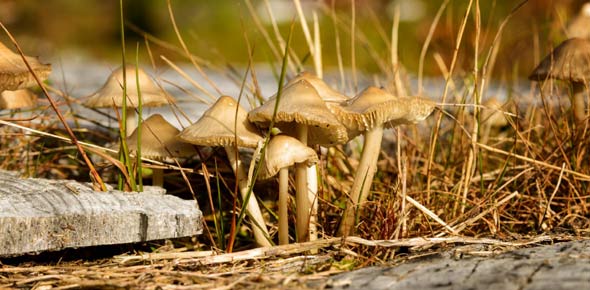Science Viruses, Bacteria, Fungi, And Protist

Microbiology is the study of microorganisms multicellular, unicellular, or cellular. This quiz gauges you knowledge on viruses, bacteria, fungi and protest. To figure out how much information you know take this quiz
Questions and Answers
- 1.
A tiny nonliving particle that ivades and multiplies inside living cells.
- A.
Virus
- B.
Paracite
- C.
Host
- D.
Cell
- E.
Fluid
Correct Answer
A. VirusExplanation
A virus is a tiny nonliving particle that invades and multiplies inside living cells. Unlike parasites, which are organisms that depend on a host for survival, viruses are not considered living because they cannot reproduce or carry out metabolic functions on their own. Instead, they rely on infecting host cells and hijacking their cellular machinery to replicate. Therefore, the correct answer is virus.Rate this question:
-
- 2.
A living thing that provides a source of energy for a virus or organism.
- A.
Virus
- B.
Host
- C.
Organism
- D.
Living thing
- E.
Animal
Correct Answer
B. HostExplanation
A host is a living thing that provides a source of energy for a virus or organism. In the context of this question, a host refers to a living organism that serves as a habitat or carrier for a virus. The virus relies on the host for its survival and reproduction. The host may or may not be harmed by the presence of the virus, but it is essential for the virus to complete its life cycle.Rate this question:
-
- 3.
The organisms that live inside and organism causing it harm.
- A.
Host
- B.
Bacterphage
- C.
Host
- D.
Virus
- E.
Parasite
Correct Answer
E. ParasiteExplanation
A parasite is an organism that lives inside another organism and causes harm to it. It relies on the host organism for survival and derives nutrients from it, often causing damage or disease in the process. This relationship is considered parasitic because the parasite benefits at the expense of the host. Examples of parasites include ticks, fleas, and certain types of worms.Rate this question:
-
- 4.
A virus that affects bactira.
- A.
Bacteriphage
- B.
Paracite
- C.
Host
- D.
Cell
- E.
Harmful
Correct Answer
A. BacteriphageExplanation
A bacteriophage is a virus that specifically infects bacteria. It is not harmful to other types of cells, as it is designed to target and replicate within bacterial cells. The term "parasite" can also be used to describe a bacteriophage, as it relies on the host bacterium for its survival and reproduction. Therefore, the correct answer in this case is "Bacteriophage".Rate this question:
-
- 5.
Th only way that virus are like cells is that they__________________.
Correct Answer
multiplyExplanation
Viruses are like cells in that they have the ability to multiply. While cells can divide and reproduce to create new cells, viruses can replicate themselves by hijacking the machinery of host cells. They insert their genetic material into the host cell and use the host's resources to produce more virus particles. This process of multiplication allows viruses to spread and infect other cells or organisms. Therefore, the ability to multiply is a shared characteristic between viruses and cells.Rate this question:
Quiz Review Timeline +
Our quizzes are rigorously reviewed, monitored and continuously updated by our expert board to maintain accuracy, relevance, and timeliness.
-
Current Version
-
Mar 20, 2023Quiz Edited by
ProProfs Editorial Team -
May 20, 2010Quiz Created by
Gtg2666
- Anatomy Quizzes
- Bacteria Quizzes
- Bio Quizzes
- Biological Evolution Quizzes
- Biology Exam Quizzes
- Biology Test Quizzes
- Cell Quizzes
- Cell Biology Quizzes
- Chapters Of Biology Quizzes
- Classical Conditioning Quizzes
- Conservation Biology Quizzes
- Enzyme Quizzes
- Fungi Quizzes
- General Biology Quizzes
- Genetics Quizzes
- Immunology Quizzes
- Macromolecule Quizzes
- Marine Biology Quizzes
- Microbiology Quizzes
- Mitosis And Meiosis Quizzes
- Parasitology Quizzes
- Prokaryote Quizzes
- Protozoa Quizzes
- Respiratory Quizzes
- Spine Quizzes
- Stem Cell Quizzes
- Taxonomy Quizzes
- Traits Quizzes
- Ultimate Biology Quizzes
- Virus Quizzes
 Back to top
Back to top


